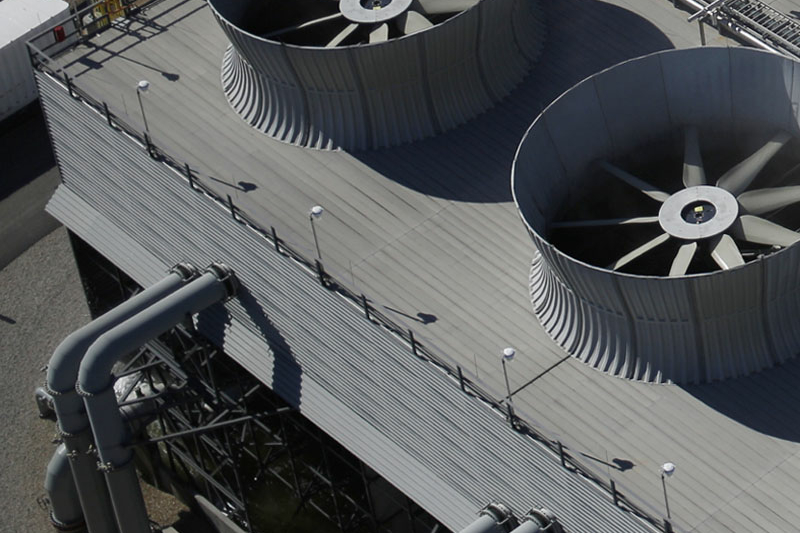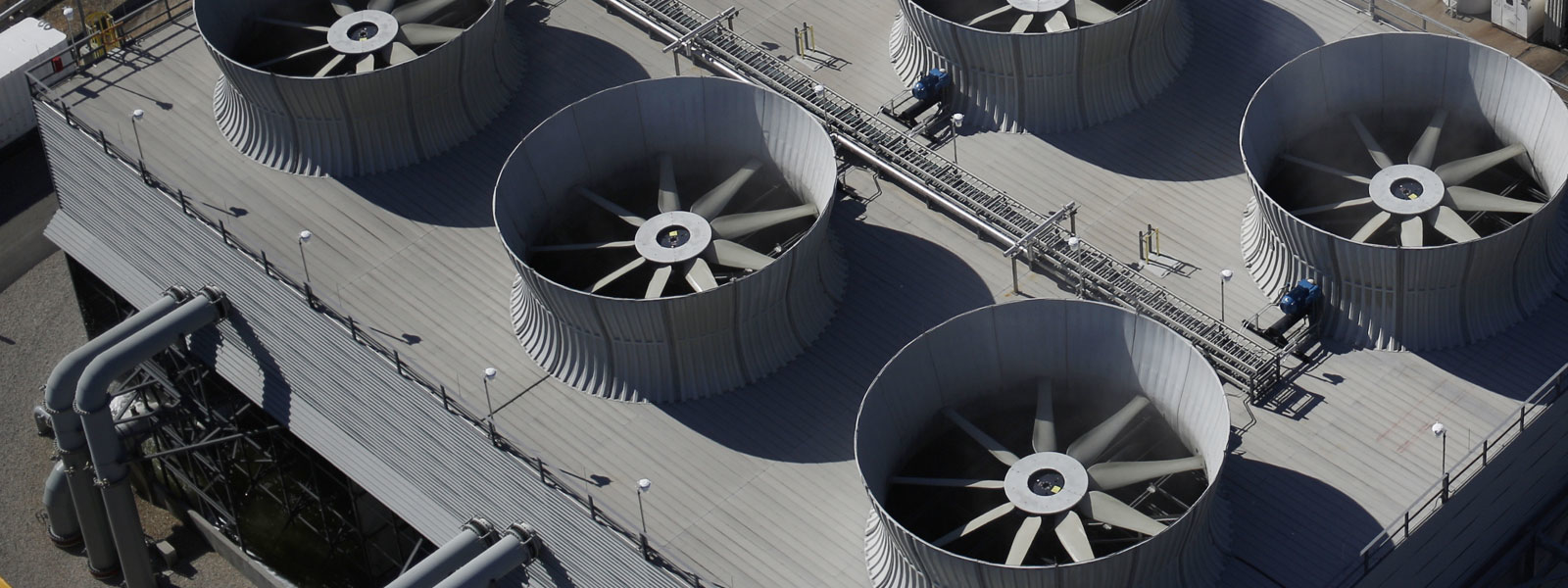US tax credit encourages investment in carbon capture and storage
Our overview of the Section 45Q tax credit helps investors understand how they may receive incentives to capture, store and use carbon dioxide and carbon oxide

This report looks at where we are in the journey toward implementing carbon capture and storage (CCS) technologies, with a focus on how laws and regulations in the US and Australia affect CCS adoption. We see two main ways that authorities will shape the CCS landscape, often acting as catalysts to speed implementation.
Our objective is to help companies understand the CCS landscape so they can pursue the best possible course to meet climate change mitigation goals and finance and properly structure CCS projects. To that end, this report has a section on US incentives for CCS, which zooms in on the 45Q tax credit, and a section on federal environmental and other protections in the US. The report has a section on Australian regulations affecting CCS, which covers CCS-specific rules and relevant environmental and other protections in the country. And it includes a brief section on the outlook for CCS M&A, which we believe will accelerate in coming years.
Our overview of the Section 45Q tax credit helps investors understand how they may receive incentives to capture, store and use carbon dioxide and carbon oxide

Although there are no CCS-specific federal environmental laws or regulations, the federal government has significant influence on how CCS is implemented in the US

Despite short-term headwinds, long-term trends are likely to drive increased investment in carbon capture and storage

by Tim Power
CCS projects are regulated by the Commonwealth, states and territories under CCS legislation and more general environmental laws and requirements


Although there are no CCS-specific federal environmental laws or regulations, the federal government has significant influence on how CCS is implemented in the US
World in Transition Our views on changing dynamics in energy, ESG, finance, globalization and US policy.
Carbon capture and storage (CCS) does not fit neatly within the current regime of federal environmental law and regulation in the US. The development, construction and operation of CCS projects and associated carbon dioxide and carbon oxide pipelines are primarily regulated by states. Indeed, there are no federal environmental regulations that are specific to CCS projects or associated pipelines.
There are, however, numerous federal environmental laws and regulations that enable federal agencies to influence efforts across the CCS value chain, often in coordination with state regulatory agencies. And though there is bipartisan support to increase incentives for using CCS to combat climate change, CCS projects still face many obstacles in the US, and current federal environmental laws and regulations may often impede progress.
Here we discuss a variety of areas, under seven broad categories, where federal environmental laws and regulations may affect CCS projects and pipelines:
The National Environmental Policy Act (NEPA) is the principal federal law that dictates how environmental review and permitting works at the federal level. NEPA imposes procedural requirements on federal agencies. For any particular federal agency, compliance may require assessing the activities of other entities, inside or outside government. Projects in the private sector may be subject to NEPA if they have a federal nexus—for example, if they need a significant federal permit or involve federal land, federal funding or federally managed infrastructure. The NEPA process is conducted by the federal agency or agencies that are connected to the project's particular federal nexus.
Thus CCS projects with a federal nexus may trigger NEPA. Some triggers are relatively easy to intuit, while others are less so. Take funding, for instance. CCS projects in the US may receive federal funding, whether they are in development or fully operational. NEPA is triggered if federal funding involves significant federal control or influence over the use of funds. The Department of Energy (DOE) takes the lead on NEPA for many CCS projects in the US due to its prominent role in CCS project funding. Federally funded projects are not subject to NEPA when the federal funds are minimal and no agency has control over the project's outcome.
A carbon dioxide or carbon oxide pipeline may also require NEPA review if it has a federal nexus, such as crossing federal lands or waterways. But even a pipeline that doesn't have a direct or independent federal nexus may be subject to NEPA review if it is "connected" to a CCS project that has a federal nexus. Similarly, a pipeline transporting carbon oxide from a CCS project that does not independently require NEPA review may be considered "connected" if that project operates in conjunction with another CCS project that has a federal nexus.
In the language of NEPA, projects are connected and therefore may be subject to NEPA review if they contain "proposed federal actions" that qualify as "connected actions."
Proposed federal actions are activities that have an existing or foreseeable federal nexus.
Proposed federal actions qualify as connected actions if they automatically trigger other actions that may require NEPA review—actions that are "closely related" and "should be discussed" in the same NEPA document. Such proposed actions cannot or will not proceed unless other actions are taken previously or simultaneously, or if the actions are interdependent parts of a larger action and depend on the larger action for their justification.
It is worth noting that carbon dioxide and carbon oxide pipelines do not necessarily have the same potential for environmental impact as oil and natural gas pipelines. But given recent high-profile opposition and litigation relating to the environmental impact of oil and natural gas pipelines in the US, opposition to permitting of carbon dioxide and carbon oxide pipelines could increase, particularly for projects that involve NEPA review.
It's also worth noting that NEPA review can significantly delay a project—in part, because the process often involves many stakeholders and is subject to public review and comment. Those who oppose CCS projects may invoke NEPA to challenge them.
Prior to permitting and construction, CCS projects that are subject to NEPA must undergo an environmental analysis called an Environmental Assessment (EA). Generally, an EA evaluates the need for the proposed project, identifies and evaluates any reasonable alternatives, and assesses the environmental social, economic and cultural impacts of the proposed project and alternatives. This may involve consideration of potential impacts to air quality, soil, groundwater, surface water, biological resources, cultural resources, aesthetics and noise.
Based on the EA's results, the lead federal agency conducting the environmental review may then prepare a more rigorous assessment that is open to public review and comment, and responds to substantive public comments. This more rigorous assessment results in an Environmental Impact Statement (EIS). NEPA requires an EIS to be prepared whenever a proposal involves a "major federal action" that will significantly affect the quality of the human environment.
If an agency is required to prepare an EIS, it must do so in consultation with agencies that are conducting studies mandated by specified environmental laws. The EIS must include the comments of federal agencies that have jurisdiction by law or have special expertise with respect to any environmental impact involved. An agency must comply with NEPA's documentation requirements before any irreversible and irretrievable commitment of resources is made. The agency leading the NEPA process must prepare a record of decision that states whether it will issue a permit to the applicant, identifies alternatives considered and relevant factors used in making its decision, and outlines the mitigation, monitoring and enforcement measures required to avoid environmental harm.
A federal action (i.e., an action that has a federal nexus) may be "categorically excluded" from NEPA if it does not, individually or cumulatively, have a significant effect on the environment. The reason for an exclusion is usually explained in the NEPA procedure regulations that are adopted by each federal agency.
In 2011, for example, the DOE promulgated a new regulation to create 20 categorical exclusions to NEPA review. These excluded federal actions include experimental wells for injection of small quantities of carbon dioxide (wells that would be used, over the duration of the project, to inject, in aggregate, less than 500,000 tons of carbon dioxide into a geologic formation). To be excluded, such wells and associated drilling activities must also (1) have a low potential for seismicity, subsidence and contamination of freshwater aquifers; (2) be compliant with applicable requirements, best practices and DOE protocols; and (3) be sufficiently remote that they don’t have the potential to cause significant impacts due to noise and other vibrations. Wells may be used for enhanced oil or natural gas recovery or for secure storage of carbon dioxide in saline formations or other secure formations.
On July 16, 2020, the White House Council on Environmental Quality published a final rule that revises how NEPA is implemented.
The rule makes several procedural changes, including establishing presumptive time limits of one year for the preparation of EAs and two years for the preparation of EISs. It also makes several substantive changes, including redefining the terms "major federal action," environmental "effects" and "reasonable alternatives."
The rule went into effect on September 14, 2020. However, opponents of the rule filed challenges arguing that it is contrary to the purpose of NEPA, disregards cases and guidance documents interpreting NEPA, and violates the Administrative Procedure Act.
Furthermore, President Biden issued an executive order directing the Environmental Protection Agency to review the July 2020 rule on January 20, 2021. The Biden administration is expected to rescind the rule.
A federal permit may be required under the Clean Water Act if a CCS project or pipeline crosses water or wetlands. The Army Corps of Engineers issues permits for discharge of dredge or fill materials under Section 404 of the Clean Water Act. Section 404 requires a permit for any utility line crossing that requires the discharge of dredge or fill materials into US waters. This includes "any pipe or pipeline for the transportation of any gaseous, liquid, liquescent or slurry substance for any purpose."
The level of environmental analysis is based on the type of permit required. Permits issued under Section 404 are categorized as either general or individual. General permits cover activities that have minimal cumulative impact. Although projects assessed for general permits "undergo a stringent pre-approval evaluation process that involves a comprehensive environmental assessment under NEPA and also public notice and comment," the process does not involve substantive findings related to each discrete project.
Individual permits cover water or wetland crossings with potentially significant impact and require a more extensive evaluation process that involves consideration of alternatives and incorporation of compensatory mitigation.
The National Historic Preservation Act (NHPA) may require federal review of a CCS project or pipeline if it has the potential to impact a federally recognized historic or cultural property.
The NHPA's consultation and review process is designed to avoid or minimize harm to historic properties where "the area of potential effects" from a proposed project may result in changes to a property's character or use. The NHPA requires federal agencies to consult with the Advisory Council on Historic Preservation and other stakeholders prior to taking an action that may affect a site "included in or eligible for inclusion" in the National Register of Historic Places. Sites may include "traditional cultural properties" that, due to their association with the cultural history, practice or traditions of Native American groups, rural communities or particular cultural groups "are important in maintaining the continuing cultural identity of the community." If a proposed CCS project or pipeline could impact historic or cultural properties, an agency must engage in the NHPA consultation process.
CCS projects or pipelines may require review of potential impacts to threatened or listed species under habitat protection and mitigation requirements. Federal laws such as the Endangered Species Act (ESA), the Migratory Bird Treaty Act (MBTA), and the Bald and Golden Eagle Protection Act prohibit developers from activities that are likely to result in a "take" of a protected species. These statutes impose both civil and criminal penalties for take violations, including the prescriptive imposition of criminal penalties under the MBTA.
The term "take" means to harass, harm, pursue, hunt, shoot, wound, kill, trap, capture or collect, or to attempt to engage in any such conduct.
Before engaging in activities that are likely to result in a take, project developers must consult with the Fish and Wildlife Service (FWS) as part of NEPA or obtain an Incidental Take Permit under Section 10 of the ESA. They must also develop a habitat conservation plan. Based on FWS conclusions, projects may be required to redesign or reroute infrastructure or implement other "reasonable and prudent alternatives" to avoid takes of protected species. Alternatively, if a project must obtain an Incidental Take Permit, conditions for the implementation of measures to minimize the incidental taking's impact may be included in an Incidental Take Statement prepared by FWS. Developers, in coordination with agencies, may also agree to voluntary conservation measures through public-private conservation agreements or letters of commitment
The federal Environmental Protection Agency's (EPA's) Greenhouse Gas Reporting Program (GHGRP) requires reporting of greenhouse gas (GHG) data and other relevant information from large GHG emission sources, fuel and industrial gas suppliers, and carbon oxide injection sites in the US. This includes information regarding the capture, supply and underground injection of carbon oxide in the US. Approximately 8,000 facilities are required to report their emissions annually, and the reported data are made available to the public each year.
GHG emissions data from these activities are reported under several different subparts of the GHGRP regulations. Regulations governing suppliers of carbon dioxide (subpart PP) apply to facilities that capture carbon dioxide from industrial sources and process or extract it from natural carbon dioxide-bearing formations for supply into the economy. Regulations governing underground injection of carbon dioxide (subpart UU) apply to facilities that inject carbon dioxide underground for enhanced oil recovery, acid gas injection and disposal, carbon storage research and development, or for any other purpose other than geologic sequestration. Regulations governing geologic sequestration of carbon dioxide (subpart RR) apply to facilities conducting geologic sequestration and provide a mechanism for such facilities to monitor their own activities and report to the EPA about the amounts of carbon dioxide they sequester.
Facilities submit a plan for monitoring, reporting and verifying carbon dioxide sequestered underground. Once the plan is approved, facilities report basic information on carbon dioxide received for injection, data related to the amounts of carbon dioxide sequestered, and annual monitoring activities.
The Safe Drinking Water Act (SDWA) requires the EPA to establish rules to protect underground sources of drinking water (USDW) from endangerment. The EPA developed the Underground Injection Control (UIC) program to protect USDW by setting rules for operating underground injection wells. The EPA has promulgated regulations and established minimum federal requirements for six classes of injection wells.
There are two primary UIC well classes that may include CCS projects with carbon dioxide injection. Class II wells are those used exclusively to inject fluids that are associated with oil and natural gas production (e.g., wastewater from hydraulic fracturing and fluids used for enhanced oil recovery (EOR)). Geologic storage of carbon dioxide associated with such operations can be incidental (for example, the storage of carbon dioxide associated with EOR). Class VI wells are those used to inject carbon dioxide into deep geologic formations for the purpose of storing carbon dioxide. The EPA established this well class separately from Class II to provide specific regulations for projects where the purpose is geologic storage.
It is important to note that the EPA has delegated primary regulatory authority (also referred to as "primacy") to many states to administer the UIC program. The EPA may grant primary authority to a state for all or part of the UIC program. In some jurisdictions, primacy for certain well classes may be shared with the EPA or divided between different states, territories or tribal authorities. A state seeking UIC program primacy must demonstrate to the EPA that the state has jurisdiction over underground injection; state regulations meet or exceed the federal UIC requirements; and the necessary administrative, civil and criminal enforcement remedies are in place.
The UIC program regulations generally require owners or operators of all classes of wells to set aside financial resources sufficient to maintain, plug and abandon wells consistent with approved closure plans. The regulations also set forth more specific financial responsibility requirements applicable to each well class. States with primacy may impose additional financial responsibility on owners or operators.
The Department of Transportation's Pipeline and Hazardous Materials Safety Administration (PHMSA) has primary authority to regulate interstate carbon dioxide pipelines. The PHMSA's Office of Pipeline Safety regulates the design, construction, operation, maintenance and spill response planning for regulated pipelines. The PHMSA establishes minimum safety standards for interstate pipelines, and has largely preempted states from establishing their own standards for interstate pipelines. However, states that have carbon dioxide pipelines may regulate the safety of such pipelines to varying degrees under delegation of authority from the Hazardous Liquid Pipeline Act.
It is important to note that the PHMSA regulates pipelines transporting carbon dioxide in a supercritical liquid state, but it does not regulate pipelines transporting carbon dioxide in a subcritical fluid or gaseous state. Nevertheless, because carbon dioxide is generally more difficult to transport as a gas, the majority of carbon dioxide transported over distances is in a supercritical liquid state and therefore subject to PHMSA regulation. The PHMSA has considered revisions to existing regulations that would include pipelines transporting gaseous carbon dioxide, but it has not yet implemented any such changes.
There are several GHG emissions trading schemes in the US, including the Regional Greenhouse Gas Initiative and the California Cap-and-Trade Program. It's important to understand that leaks from CCS projects may result in liability for project operators if emissions trading regimes provide benefits to CCS projects for carbon dioxide storage. Emissions trading regimes may offer benefits to CCS projects because carbon dioxide captured and stored by such projects is effectively carbon dioxide that has not been emitted into the atmosphere, and thus represents a reduction in emissions according to the standards of some such regimes.
The potential for leakage from CCS projects raises the issue of GHG emissions accounting liability. GHG emissions trading regimes typically include a process for verifying emissions to ensure there is no incompatibility with GHG "allowances"or credits claimed, actual emissions and credits traded. Some GHG emissions trading regimes require an annual reconciliation where operators of installations within the system must produce credits equal to their GHG emissions or face financial penalties. They may also require an up-front financial security deposit to cover potential liabilities. CCS operators receiving benefits for carbon dioxide storage from a GHG emissions trading regime should confirm the requirements and potential liabilities that may be imposed by the regime in the event of a carbon dioxide leak
Although both were dismissed, two cases in the past six years demonstrate the potential for legal challenge that CCS developers and operators may face in connection with environmental permitting.
In DJL Farm LLC v. United States EPA, a group of landowners filed suit to challenge the issuance of permits to FutureGen Industrial Alliance, a company that had sought to use CCS technology to develop the world's first near-zero emissions power plant. FutureGen had applied for permits to construct four Class VI UIC wells and inject approximately 22 million metric tons of carbon dioxide into the wells over a 20-year period. In May 2015, the EPA issued four permits to FutureGen authorizing it to construct and operate the UIC wells. A group of Illinois landowners then challenged the issuance of the permits in court. The court ultimately dismissed the case because FutureGen lost funding for the project and closed it down before the legal process ran its course.
In In re Archer Daniels Midland Co., a citizen filed a petition in 2014 challenging a UIC permit issued to Archer Daniels Midland Company, a food processing and commodities company, for a CCS project in Illinois that would include a carbon dioxide injection well. The petitioner, who had standing to challenge the permit because he had submitted written comments on the draft permit, argued that the EPA had violated the ESA by failing to consult with the FWS, and that the EPA failed to include provisions in the permit that would properly compensate Illinois property owners for the migration of carbon dioxide to their "pore space." The EPA Environmental Appeals Board dismissed the challenge, and the petitioner filed a voluntary notice of dismissal after the EPA sought to dismiss the petition on the ground that it was not timely.
***
Developers of CCS projects should be aware of the numerous environmental laws and regulations that may directly or indirectly affect such projects. While the federal government has established substantial incentives for the development of CCS projects, the nascent CCS industry will likely remain subject to a complex and changing environmental legal and regulatory landscape for years to come.
White & Case means the international legal practice comprising White & Case LLP, a New York State registered limited liability partnership, White & Case LLP, a limited liability partnership incorporated under English law and all other affiliated partnerships, companies and entities.
This article is prepared for the general information of interested persons. It is not, and does not attempt to be, comprehensive in nature. Due to the general nature of its content, it should not be regarded as legal advice.
© 2021 White & Case LLP